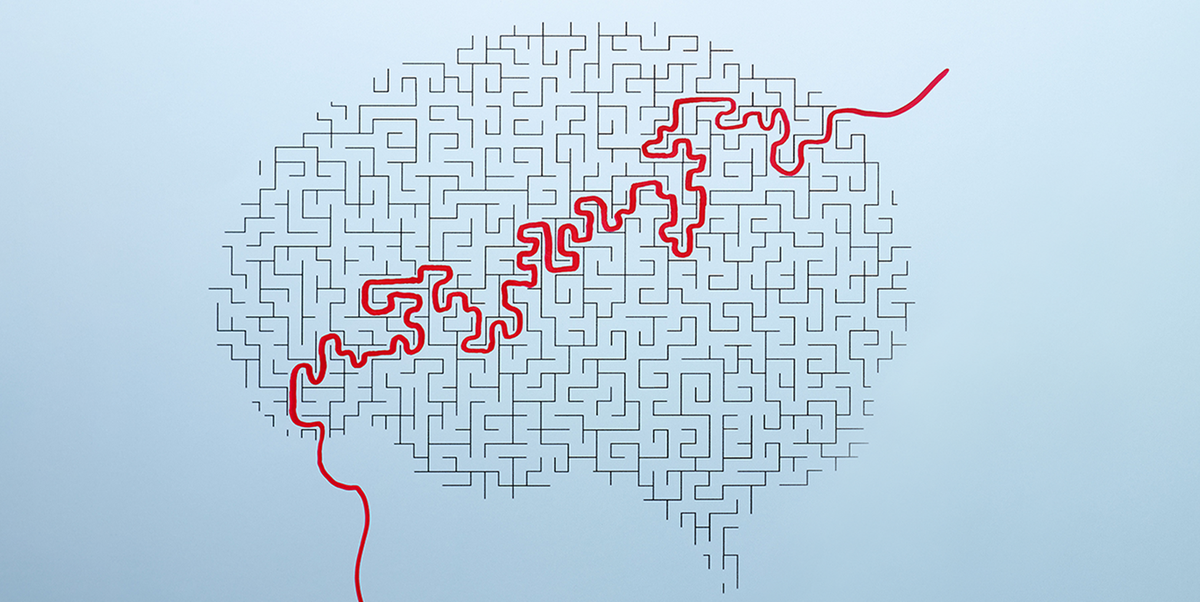
IT’S A CONFUSING time to have ADHD. There’s misinformation: Of the 100 most-watched TikTok videos about attention deficit hyperactivity disorder, about half contain falsehoods (think fearmongering about meds, claims based on personal experience rather than empirical data, and promotion of products not proven to work), according to a new PLOS One study. There’s access trouble: A recent Adderall shortage left millions struggling to refill prescriptions. And then there’s the RFK factor: Health and Human Services secretary Robert F. Kennedy Jr. has launched a government inquiry into the “threat” posed by “poisonous” drugs, like the prescription stimulants used to manage ADHD.
But while doctors can’t do anything about TikTok, they can ease concerns that drugs are the only way to treat your symptoms. Drug-free interventions are on the rise and can even complement pills by addressing organizational skills, emotional regulation, and stress management, says Javier Quintero, MD, PhD, a psychiatrist and an authority on treating ADHD. “They can also help to reduce the dosage of medication and, by focusing on practical and emotional competencies, significantly enhance day-to-day functioning and quality of life.” Whether you want to go pharma-free or make your meds work better, consider these strategies.
Double-Check Your Diagnosis
SOUNDS BASIC, BUT first make sure you’re treating the right problem. “The vast majority of adults who think they have ADHD do not have it,” says Gregory Scott Brown, MD, a psychiatrist and Men’s Health advisor. ADHD symptoms usually start before age 12, even if they go undetected until later. Yes, many guys struggle with focus, but often that’s caused by burnout, depression, or anxiety. Your doctor can help you figure out what’s up.
Ask About New Meds
STIMULANT, THE MOST popular ADHD meds, come in dozens of varieties. If you think your pills aren’t working, or if you’re worried about side effects, ask your doc about using a different one or changing the dose. Stimulants aren’t the only options either. Viloxazine (Qelbree), a selective norepinephrine reuptake inhibitor (similar to Cymbalta, Pristiq, and Effexor), was approved by the FDA in 2022 for adult ADHD. Qelbree works differently than stimulants. It’s believed to alter the levels of brain chemicals linked with ADHD. More options could be on the way. A promising one: “Centanafadine, a triple reuptake inhibitor that targets serotonin, norepinephrine, and dopamine,” says Dr. Quintero. Now in clinical trials, this drug seems to work as well as traditional stimulants, he says.
Commit to Therapy
“THE STARTING POINT for recommending any nonpharmacological approach should be a clear understanding of the patient’s actual challenges—identifying how ADHD impacts their daily life and translating that into concrete therapeutic goals,” says Dr. Quintero. Doctors will most often recommend cognitive behavioral therapy (CBT) because it’s proven to work in treating adult ADHD. Yes, this means regular sessions, but the potential payoff is huge. CBT can help you escape thought spirals, modify negative patterns of thinking, and even boost skills like time management, organization, and emotional regulation.
So, say you’re having trouble starting an assignment and your mind wanders to what doctors call an automatic thought—a spontaneous, often recurring mental reflex: I can’t seem to do anything right. Then you feel worthless and scroll social media for a mood boost. CBT would help you recognize the automatic thought and reframe it to something like: I’m not working on my project because I have too much on my to-do list, but if I prioritize the top two tasks, then I might be more motivated to get started. “Identifying the thought can shift the domino effect to a place of less shame and more productivity,” says Dr. Brown.
If therapy sounds like not your style, consider an ADHD coach (a real thing), who can offer tips to help you get organized and follow through with plans. These coaches don’t have to earn a state license, but you can find ones who are certified by groups (such as the Professional Association for ADHD Coaches) that require a combination of training, mentoring, experience, and a test.
Double Down on Wellness
THAT INCLUDES MEDITATION, which is a research-backed way to boost focus and improve emotional regulation—but, yes, it’s tough for people with ADHD. Try a structured meditation program in the form of an app like Headspace or Calm or a mindfulness class or workshop.
If that sounds meh, try EndeavorOTC, which offers tech-assisted cognitive stimulation through an FDA-authorized, video game–like app. You navigate digital obstacle courses while pursuing multiple goals at once. One trial found that 83 percent of adults with ADHD who played six to eight times a day for five days a week improved their focus over six weeks.
Actual exercise is great too. Physical activity helps increase inhibitory control—the ability to overcome strong, automatic responses to stimuli—in ADHD. In studies, intense cycling proved to be the best workout because the sport enhances thinking without increasing internal distractions. But any aerobic exercise can improve attention, working memory, and emotional regulation. All you need is just 20 minutes a day to see results—way less than you may spend on TikTok, we’re guessing?
Julie Stewart is a writer, editor and content strategist with over a decade of experience translating complex topics — health and medicine, science and engineering — into engaging, accessible stories. Her work has appeared in publications like Men’s Health, Women’s Health, AARP The Magazine, EatingWell and Prevention, and she has also led strategic communications for a top engineering college and a global oncology company.
Source link

